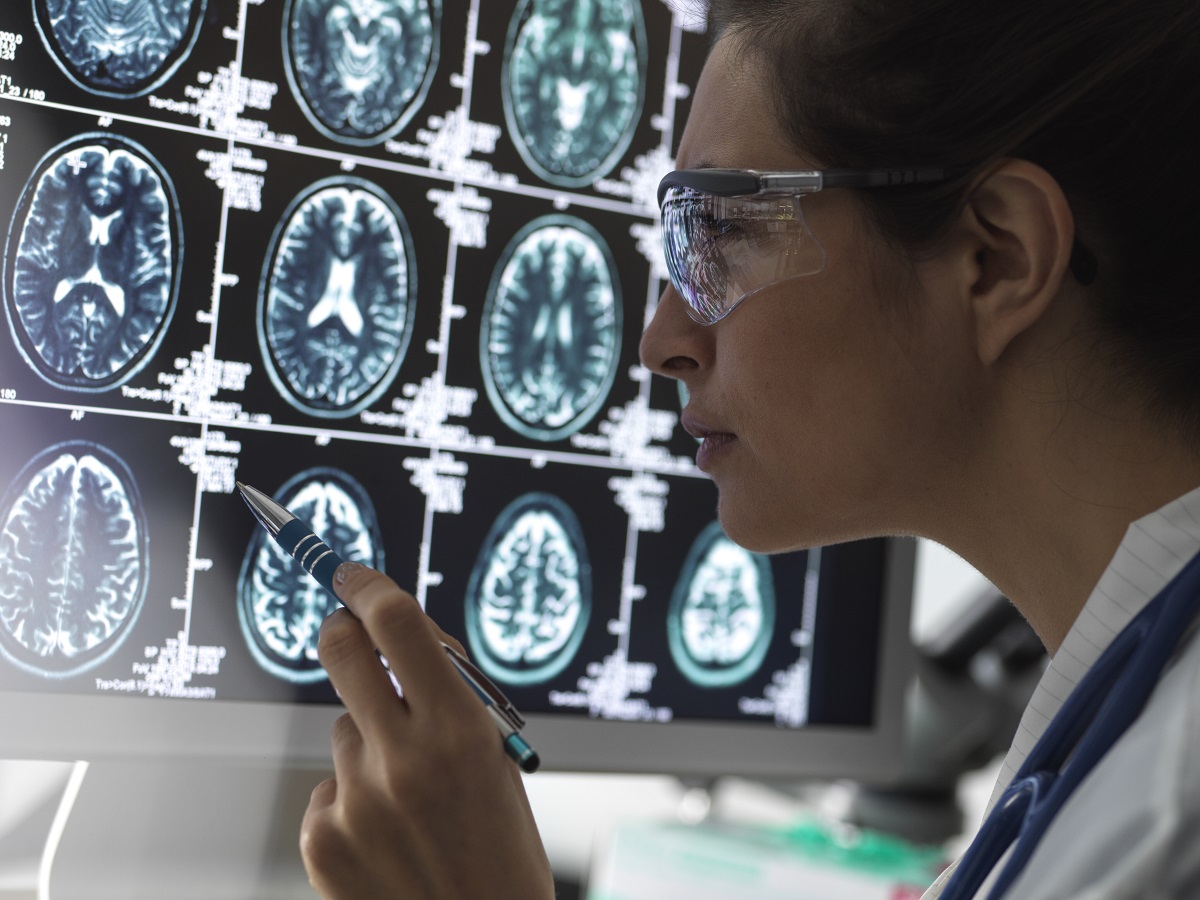A rare genetic developmental and neurological disorder that impacts brain development is called Rett Syndrome. This condition provokes a loss of motor and language skills. Mostly, Rett syndrome negatively affects women.
Approximately all children experience first symptoms in the first 6 months of age. As a result, they lose skills they had previously including the ability to walk, crawl, communicate, or use hands.
This is a progressive condition and over time it may lead to problems with muscles that are responsible for coordination, movement, and communication. Intellectual issues and seizures also can happen in children with Rett syndrome.
However, it is not possible to cure this condition but with proper treatment, you can lessen the symptoms and improve your quality of life. Nowadays treatment options can improve movement and communication, reduce seizures, and provide support for children and adults with this health problem.
Symptoms
Those who suffer from this syndrome usually do not experience any complications during pregnancy or delivery. Therefore, they develop as expected until they reach 6 months of age and symptoms may start to appear. However, approximately all noticeable changes occur between 12-18 months of age. Commonly, the symptoms appear differently among children with Rett syndrome. Check below the primary Rett syndrome symptoms:
- Slowed growth including microcephaly (reduced head size)
- Loss of coordination and movement abilities (such as decreased hand control)
- Loss of communication abilities (commonly, children with Rett syndrome develop nonverbal communication skills)
- Another primary symptom of this syndrome is repetitive and purposeless hand movements that are different among children.
Check below other symptoms:
- Abnormal movement of the eye such as intense blinking, staring, crossed eyes, and others.
- Trouble breathing including breath holding, rapid breathing, swallowing air, and others.
- Crying and irritability (sometimes, children can experience anxiety and fear).
- Behavioral changes (such as hand licking, sudden odd facial expressions, and others).
- Intellectual issues
- Seizures
- Scoliosis
- Irregular heartbeats (this is a life-threatening symptom which can lead to sudden death)
- Sleeping problems (insomnia) and others (including reduced pain response, small feet, and hands, swallowing and chewing issues, and bowel function problems).
Rett Syndrome Stages
- Stage 1 – This is also known as early-onset and symptoms and mild during this stage. Mostly, it begins between 6-18 months of age. The most common symptoms of children with this stage are reduced interest in toys, delays in sitting or crawling, and less eye contact.
- Stage 2 – This stage is also known as rapid deterioration and starts usually between 1-4 years old. During this Rett syndrome stage, children lose abilities previously had. Abnormal hand movements, slowed head growth, hyperventilating, coordination problems, and loss of social communication are the most common symptoms for those who experience this stage.
- Stage 3 – This stage commonly, appears between 2-10 years old and can last up to a few years. It is also known as plateau and usually in such cases seizures appear.
- Stage 4 – Commonly, this syndrome stage occurs after 10 years old and lasts from years to decades. Those who suffer from the last stage of Rett syndrome stage usually experience, scoliosis, joint contractures, muscle weakness, and decreased mobility. On the other hand, seizures, communication, and understanding skills can slightly improve.
Immediately contact a healthcare provider if you notice that your child experiences any of the following symptoms. Examples include:
- Repetitive hand movements
- Reduced mobility and coordination
- Loss of interest in toys and reducing eye contact
- Loss of language development
Causes
This is a rare genetic disorder that occurs due to genetic mutation (changes). These mutations usually happen randomly in the MECP2 gene. However, there are a few cases of inherited Rett syndrome. Genetic mutations are caused by an issue with certain protein production that is vital for brain development. Anyway, the exact cause is not known and needs more research.
Rett Syndrome in Men
Males are less commonly affected by this genetic disorder. They also can experience severe symptoms due to this condition because of different chromosome combinations. Approximately, all children die before birth or during infancy. However, a small amount of men can survive until adulthood.
Risk Factors
Generally, there are no risk factors for this condition because the gene changes that provoke Rett syndrome are random. However, if you have a family history of this condition, it could play a role but rarely happens.
Complications
- Sleeping disturbances
- Eating problems which usually lead to delayed growth and poor nutrition
- Bladder and bowel issues include gastroesophageal reflux disease (GERD), bowel or urinary incontinence, gallbladder disease, and constipation.
- Pain
- Joint, muscle, or bone disorders
- Mental health problems (including anxiety, behavioral changes, and others)
- Reduced life span
If you suspect you have any of the previous complications, it is advised to visit a doctor right away.
In addition, it is impossible to prevent this health condition because genetic mutations happen suddenly and cannot be identified.
Diagnosis
Physicians usually diagnose this syndrome by monitoring the development and growth and assessing the symptoms and family history. Moreover, different health conditions can provoke symptoms similar to those that happen in people with Rett syndrome. Check below some of them:
- Other genetic conditions
- Metabolic disorders (including phenylketonuria or PKU)
- Diseases that provoke brain and body breakdown (degenerative health conditions)
- Brain diseases due to infections or trauma
- Prenatal brain damage
- Cerebral palsy
- Autism spectrum disorder
Check below some tests that doctors perform to diagnose Rett syndrome:
- Urine tests
- Blood tests
- Magnetic resonance imaging (MRI) and computed tomography (CT) scans
- Hear and visual examinations
- Brain activity tests (such as electroencephalograms or EEGs)
Genetic Test
Healthcare providers may perform some genetic tests if they suspect your child may experience Rett syndrome. Commonly, this test is enough to diagnose this syndrome.
Treatment
Despite there is no way to cure Rett syndrome, proper treatment, can help you to lessen the symptoms and prevent complications. Doctors usually prescribe a combination of treatments for those who suffer from this disease. Check below some treatment options:
- Regular medical care – Usually, treatment for this condition requires healthcare specialists. Thus, they will help to manage the symptoms. Regular appointments with your doctor are needed to monitor different physical changes including gastrointestinal problems, scoliosis, heart issues, and others.
- Medicines – Physicians usually prescribe medicines to treat and control symptoms. These can help with stiffness of the muscles, seizures, or problems with sleep, breathing, or heart.
- Physical therapy – There are different physical therapies that physicians recommend to control movement, sitting position, walking, balance, and other problems caused by this syndrome.
- Occupational therapy – This therapy is effective for those who experience uncontrollable arm or hand movements.
- Speech-language therapy – Doctors usually advise this therapy to help the child learn nonverbal communication methods.
- Nutritional support – One symptom of this syndrome is a lack of appetite. Therefore, doctors may recommend a balanced high-calorie diet. However, proper nutrition is very important for healthy growth and development.
- Behavioral therapy – It is also recommended to practice good sleep habits because it can help those who suffer from sleeping problems. Behavior problems also can be improved by using these therapies. Talk with a doctor for more details.
Frequently Asked Questions
What is the life span in people with Rett syndrome?
Generally, most people with this condition survive into their 40s or 50s. The life span depends on the severity of the condition, and when the first symptoms appear.
What is the primary Rett syndrome symptom?
Commonly, hypotonia (loss of muscle tone) is the first symptom that appears in those who suffer from this disease. If you notice that your children experience this symptom, immediately contact your healthcare professional.
How common is Rett syndrome?
This is a very rare genetic disorder that occurs in 1 in 10,000 girls by age 12. However, many Rett syndrome cases are undiagnosed or misdiagnosed which makes it challenging to determine the exact frequency of the disease in the population. If you have additional questions, ask your physician.




